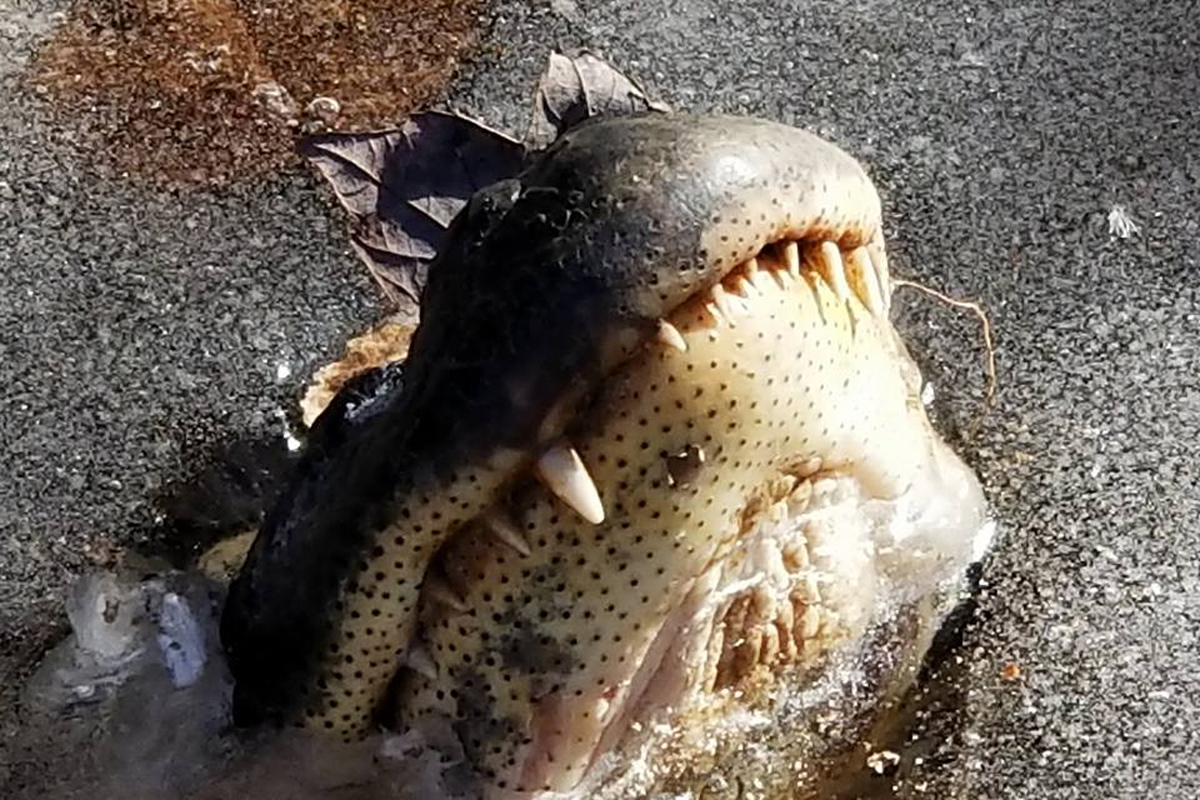When you buy through links on our site , we may earn an affiliate commission . Here ’s how it works .
The ossified remains of seven species of crocodile relatives were rule along the bank of the Amazon River in Peru . These prehistoric reptilian endure in South America at a fourth dimension when the Amazon River basin contained swamps , river and lake , as well as a people of pelf . But when architectonic forces created the Amazon River , the swamps and the clams largely disappeared . It ’s possible that , in twist , these crocodile relative change their diet and body shapes , the investigator of a new sketch say . [ Read the full tale on the prehistorical crocodile relatives ]
Shovel lip

A model of the 13 - million - year - oldGnatusuchus pebasensis , a crocodylian with a brusque face and rounded teeth that may have shoveled through the clay at the bottom of lakes and swamps to find prey , such as loot and other mollusc . A crocodylian is an society that include crocodile , alligators , cayman and gharials . ( trope citation : Model by Kevin Montalbán - Rivera . © Aldo Benites - Palomino )
Wetland snacks
This illustration shows the monolithic wetlands that once covered the Amazon River basin about 13 million years ago during the late middle Miocene . Three newly notice species of crocodylians , includingKuttanacaiman iquitosensis(left),Caiman wannlangstoni(right ) andGnatusuchus pebasensis(bottom ) , look for gelt , which they could likely scoop up with their mouths and crunch with their peglike tooth . ( icon cite : © Javier Herbozo )

Croc fossils
Excavated fossils from Peru show that seven species of crocodylian live together in the same topographic point at relatively the same time . The skulls and jaw , shown above , are extremely diverse , the research worker said . They include ( 1)Gnatusuchus pebasensis , ( 2)Kuttanacaiman iquitosensis , ( 3)Caiman wannlangstoni , ( 4)Purussaurus neivensis , ( 5)Mourasuchus atopus,(6 ) PebasPaleosuchus , and ( 7 ) Pebasgavialoid . ( Image credit : Reconstructions by Javier Herbozo . © Rodolfo Salas - Gismondi )
ironical season

For more than a decade , researchers have journey to Peru during the Amazon ’s dry season in July and August . Here , they scale an embankment for fossils when the Amazon River was at low levels . ( Image credit : © Anjali Goswami )
Rock of ages
Researchers regain all seven of the crocodylians in the same layer and the same place , which measured only about 215 square feet ( 20 straight meters ) .

" It ’s a very small area full of off-white , " tell the subject ’s lead author , Rodolfo Salas - Gismondi , a graduate scholar at the University of Montpellier , in France , and chief of the paleontology section at the National University of San Marcos ' Museum of Natural History in Lima , Peru . ( Image credit : © Rodolfo Salas - Gismondi )
Ancient skull
One of the newly discovered species ( Gnatusuchus pebasensis ) is show here in the earth before the research worker excavated it . Today ’s crocodylians have longer snouts and sharper teeth , which help them to pick up fish and other aquatic animals , unlike this remote relative , which likely used its peglike tooth to crush clams . ( © Rodolfo Salas - Gismondi )

Museum collection
All of the dodo found during the study are being stored at the Museum of Natural chronicle in Peru .
" This kind of research upgrade paleontology in Peru , " Salas - Gismondi told Live Science . ( Image credit : © Bruce Shockey )




















